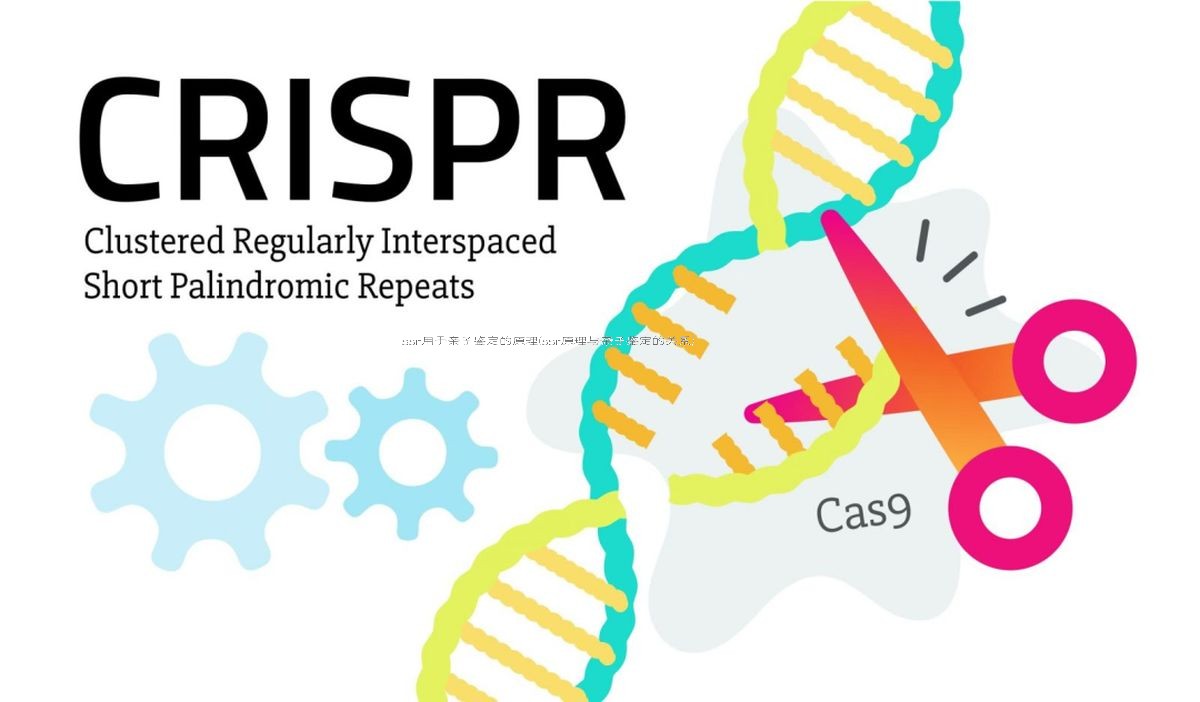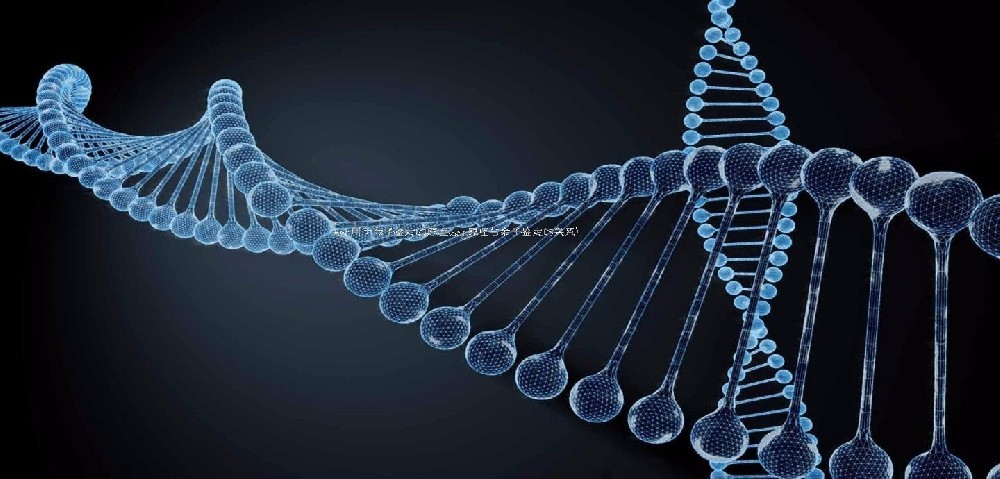亲子鉴定的鉴定原理是什么?
然后观察假设父亲的基因型,如果不具有生父基因,则可排除假设父与孩子的亲生关系。若假设父也具有生父基因,结果就不能排除假设父的亲生关系,假设某案例中母亲是FGA-22/23型,孩子为22/25型,从比较中可确定生父基因是FGA-25。此案中假设父1为FGA-22/24型假设父2为24/25型。
亲子鉴定的鉴定原理是怎样的?
然后观察假设父亲的基因型,如果不具有生父基因,则可排除假设父与孩子的亲生关系。若假设父也具有生父基因,结果就不能排除假设父的亲生关系,假设某案例中母亲是FGA-22/23型,孩子为22/25型,从比较中可确定生父基因是FGA-25。此案中假设父1为FGA-22/24型;假设父2为24/25型。
网友:ssr用于亲子鉴定的原理
原创 袁金玲等 南京林业大学学报
专题报道
袁金玲1,马婧瑕2,钟远标1,岳晋军1
1.中国林业科学研究院亚热带林业研究所;2.安吉竹子博览园有限公司。
孝顺竹和粉单竹分别隶属于禾本科簕竹属的孝顺竹亚属和单竹亚属,具有节间长、耐寒性好、秆型通直等优良特性;麻竹为禾本科牡竹属竹种,具有秆型粗大、笋材兼用等优点。利用孝顺竹为母本、麻竹和粉单竹分别为父本建立了两个杂种群体,杂种子代具有生长快、耐寒性好,纤维品质优良等特性,具有广阔的选育潜力。
本期论文推荐的作者研究采用SSR分子标记对两个杂交群体进行了检测和分析,以期能明确杂种的真实性,探索亲子遗传关系,并为优良新品种的选育和品种保护提供指纹图谱。从已公布的竹子SSR引物中随机选取30对进行筛选、检测和分析,结果发现,6对SSR引物(P8、P9、P18、P19、P20、P27)适于孝顺竹×麻竹组合的杂种鉴定和遗传分析,鉴定结果表明34个子代全部为真实杂种,杂种真实率为100%;另外6对SSR引物(P2、P9、P10、P11、P20、P28)则适于孝顺竹×粉单竹组合的杂种鉴定和遗传分析,鉴定结果表明59个子代中有54个真实杂种,杂种真实率为91.5%。孝顺竹×麻竹的杂种遗传了较多的母本位点,而孝顺竹×粉单竹的杂种则遗传了较多的父本位点。利用SSR引物扩增出的位点分别构建了两个杂交群体的指纹图谱,为品种保护提供了保障。SSR引物能有效地鉴定丛生竹杂交种的真伪,父母本的遗传位点在不同杂交组合的子代中遗传概率不同,杂交群体指纹图谱的构建可为品种保护提供保障。
下面跟学报君一探究竟!
作者简介
第一作者
袁金玲,女,1975年11月生,中国林业科学研究院亚热带林业研究所副研究员,主要从事竹类植物资源及其遗传改良。
关键词:丛生竹;杂交子代;SSR;杂种鉴定;遗传分析;指纹图谱
基金项目:浙江省农业新品种选育重大专项(2021C02070-4)。
引文格式:袁金玲,马婧瑕,钟远标,等.基于SSR标记的丛生竹杂种鉴定、遗传分析和指纹图谱构建[J].南京林业大学学报(自然科学版),2021,45(5): 10-18.YUAN J L, MA J X, ZHONG Y B, et al. SSR-based hybrid identification,genetic analyses and fingerprint development of hybridizaion progenies from sympodial bamboo(Bambusoideae,Poaceae)[J].Journal of Nanjing Forestry University (Natural Sciences Edition), 2021,45(5):10-18.DOI:10.12302/j.issn.1000-2006.202012046.
1目的
准确鉴定丛生竹杂交种,分析杂种及其亲本的遗传关系,开发可以利用的指纹图谱。
2方法
以孝顺竹(Bambusa multiplex)×麻竹(Dendrocalamus latiflorus)、孝顺竹(B.multiplex)×粉单竹(B.chungii)两个杂交群体为材料,从已公布的竹子SSR 引物中随机选取30对引物进行筛选、检测和分析。
2.1 Materials
All experimental materials were obtained fromthe Hybrid Bamboo Experimental Base located in Guilin,Guangxi Province,China. Nine clones (A1-A9)of D. latiflorus,10 clones (C1-C10) of B. chungii,and 10 clones(E1-E10) of B. multiplex were derived from self-pollinated plants. Thirty-four clones(B1-B34) of suspected B. multiplex x D.latiflorus hybrids and 59 clones(D1-D59) of suspected B.multiplex x B. chungii hybrids were selected based ontheir phenotypes. Fresh leaves of each clone with no signs of pest damage or disease were sampled for ge-nomic DNA extraction using the CTAB method.Each clone refers to a plant from a seed.
2.2 Methods
2.2.1 Primer screening and SSR detection
Thirty SSR primer pairs were selected randomly from published literature(Table 1)and synthesized by the Beijing Liuhe Huada Gene Technology Co. ,Ltd.
Thirty SSR primer pairs were used for the PCR amplification of the genomic DNA ofnine clones(A1-A9) of D. latiflorus and 10 clones (E1-E10) of B.chungii.PCR products were detected using gel electrophoresis. Primer pairs that generated clear polymorphic products between the two groups of clones were selected. Subsequently,equal DNA amounts of the 9 clones(A1-A9) of D. latiflorus was pooled to form bulk A and the DNA of the 10 clones(E1-E10)of B. chungii was pooled to form bulk E. The bulks and DNA of the 34 clones (B1-B34) of the suspected B.multiplex x D. latiflorus hybrids were used as PCR amplification templates along with the selected primers.The PCR products were detected in gels.
▼表1 随机选取的30对SSR 引物及其序列等信息
Additionally,equal DNA amounts of the 10 clones(C1-C10) of B. chungii were pooled to form bulk C. Thirty SSR primer pairs were used in the PCR amplification of the DNA from bulks E and C. SSR primer pairs that produced clear polymorphic products between the two bulks were selected. The selected SSR primer pairs were used in the PCR amplification of the DNA from bulks E and C,as well as the 59 clones(D1-D59) of the suspected B. multiplex x B.chungii hybrids. The PCR products were detected in gels.

The PCR reaction system (20 μL) included 2 μL(20 ng/μL)DNA template,0.3 μL ( 20 μmol/L)F-primer,0.3 μL (20 μmol/L) R-primer,2 μL 10xBuffer,1.2 μL ( 25 mmol/L) MgCl₂,0.4 μL dNTPs( 2.5 μmol/L each ),0.2 μL ( 5 U/μL) Taq DNA polymerase,and 14.8 μL ddH₂O.
The PCR thermal program consisted of an initial denaturation at 94℃for 5 min,followed by 35 cycles of denaturation at 94 ℃for 30 s,annealing at 55-62℃ ( depending on the specific primer pairs ) for 35 s,extension at 72 ℃ for 40 s,and a final extension at 72℃ for 10 min.
Electrophoresis and staining of the PCR products were mixed with loading buffer,denatured at 94 ℃for 10 min,and loaded onto a 6% denaluring polyacrylamide gel. Vertical electrophoresis included pre electrophoresis at 90 W for 30 min prior to sample loading and electrophoresis at 90 W for 60 min after sample loading.Afterwards,the PCR products were visualized using the silver staining method;the procedure included fixation in 10% glacial acetic acid for 3 min,rinsing once in ddH₂O for no more than 10 s,staining in AgNO3 solution ( the 2 L solution included 6 g AgNO3,200 mL absolute ethanol,and 10mL glacial acetic acid ) for 5 min,developing in developer solution ( the 2 L solution included 40 g NaOH and 6 mL. formaldehyde ),and final fixing in 10% glacial acetic acid.
2.2.2 Data processing
Based on the relative positions of the amplified products.displayed in the gel,we used 1 and 0 to denote the presence and absence of a fragment,respectively ,in the order of the fragment size from large tosmall. Data were recorded in Excel 2010. Similarity coefficient calculations,cluster analysis,and dendrogram construction were processed using NTsyspc 2.10.
3结果
发现6对SSR引物(P8、P9、P18、P19、P20、P27)适于孝顺竹×麻竹组合的杂种鉴定和遗传分析,鉴定结果表明34个子代全部为真实杂种,杂种真实率为100% ;另外6对SSR引物(P2、P9、P10、P11、P20、P28)则适于孝顺竹×粉单竹组合的杂种鉴定和遗传分析,鉴定结果表明59个子代中有54个真实杂种,杂种真实率为91.5%。孝顺竹×麻竹的杂种遗传了较多的母本位点,而孝顺竹×粉单竹的杂种则遗传了较多的父本位点。利用SSR引物扩增出的位点分别构建了两个杂交群体的指纹图谱,为品种保护提供了保障。
3.1 SSR primer screening
Thirty SSR primer pairs were used to amplify the DNA of nine clones(A1-A9)derived from self-pollinated D. latiflorus plants and 10 clones(E1-E10)derived from self-pollinated B. multiplex plants to screen polymorphic markers. According to the results ,a total of six primer pais(P8,P9,P18,P19,P20and P27) yielded clearly distinct polymorphic PCR products between the clones of the two parents,which could be used for hybrid identification and parentage analysis. In the parental clones,the loci were usually heterozygous. Fig. 1 shows that primer pairs P8,P9 and P19 detected polymorphic sites between the D.latiflorus clones,P9 and P19 detected polymorphicsites between B. multiplex clones. To comprehensively represent the genetic characteristics of the parents ,bulks A and E were used as the parental DNA in the parentage test.Similarly,30 SSR primer pairs were screened by amplifying bulks E and C. According to the results,six primer pairs (P2,P9,P10,P11,P20 and P28) yielded clearly distinct polymorphicproducts between the parental bulks,which were used in subsequent analyses.
▲图1 利用SSR引物P8、P9和P19的扩增样品E1-E10和A1-A9的电泳图
3.2 SSR marker-based identification of intergeneric and interspecific hybrids,genetic analyses of parent-progeny relationships,and development of hybrid fingerprints
3.2.1 ldentification of E x A hybrids,genetic analyses of parent-progeny relationship,and developmentof hybrid fingerprints
The six SSR primer pairs (P8,P9,P18,P19,P20 and P27) were used in the analysis of 36 DNA samples(A,E and B1-B34 ) using PCR amplification and polyacrylamide gel electrophoresis.Thirty-four suspected hybrids contained alleles from female parent E and male parent A,indicating that they were true hybrids.The amplification results of 36 samples,including A,E and B1-B34,using P8 and P27 were presented in Fig. 2.

▲图2 利用SSR引物P8和P27扩增样品E,A和B1-B34的电泳图
To clarify the genetic relationship between parents and their progeny from the E x A cross,the amplification data generated using six primer pairs(P8,P9,P18,P19,P20 and P27) were used for the similarity coefficient calculations,cluster analysis and dendrogram construction ( Fig. 3 ).Female parent E had a closer genetic relationship with the hybrids than male parent A,indicating that the hybrids inherited more malernal alleles. Moreover,25 amplified products generated by using the six primer pairs were unable to distinguish the clones B15 and B31,indicating that the genetic backgrounds of the two clones were relatively close. Futhermore,to identify the different hybrid clones and provide a molecular basis for variety conservation,fingerprints of 34 hybrids from E x A cross were developed using the PCR amplification loci from primer P8,P20 and P27(Table 2).
▲图3 利用6对引物(P8、P9、P18、P19、P20和P27)扩增的位点对A,E及其34个E×A杂种聚类分析的树状图
▼ 表⒉利用SSR引物P8,P20和P27扩增的位点构建34个E×A杂种的指纹图谱
3.2.2 ldentification of E × C hybrids,genetic analyses of the parent-progeny relationship,and development of hybrid fingerprints
The six primer pairs(P2,P9,P10,P11,P20 and P28) were used to amplify 61 DNA samples (E,C and D1 -D59) and their products were observed following polyacrylamide gel electrophoresis,and the amplification results of 61 samples based on primer pair P9 were presented in Fig. 4. When using D48 DNA,all six primer pairs generated some PCR products that were different from parents C and E,indicating that D48 was neither the progeny of C nor E,but potentially a clone of other bamboo species crosses contaminated during the experiment.D21,D45,D57 and D58 contained alleles only from female parent E and no alleles from male parent C. Additionally,some of the primer pairs generated non-E products using the four clones as templates ( D21/P9,D45/P20,D57/P9 and D58/P9),suggesting that the four clones were derived from a cross between female parent E and a non-C male parent. Therefore,D48,D21,D45,D57 and D58 were determined to be untrue hybrids. The remaining 54 clones all contained alleles from the female and male parents and were true hybrids.
▲图4 利用SSR 引物P9扩增样品 E,C 和D1-D59的电泳图
To elucidate the genetic relationships between parents and their progeny from the Ex C cross,similarity coefficients of E,C and 59 hybrids were calculated,a cluster analysis was conducted,and a dendrogram was constructed (Fig. 5).D48 was independent from the parents and hybrids. Female parent E and four false hybrids,D21,D45,D57 and D58,were in the same group,while the true hybrids were in another groups. Male parent C was closer to the true hybrids,indicating that the hybrids inherited more patenal alleles.The genetic relationship between the parents,true hybrids,and false hybrids indicated by the dendrogram was consistent with the parentage analysis results. The six primer pairs were unable to distinguish D43/D55 and D51,D35/D59 and D47,D10 and D36,D4 and D29,D32 and D42,and D11 and D27,indicating that their genetic characteristics were relatively close. Moreover,to facilitate the clone identification and variety conservation,fingerprints of 54 true hybrids from the E x C cross were developed using the PCR amplification loci from primer P2,P9 and P11 (Table 3).
▲图5 利用6对引物(P2、P9、P10、P11、P20和P28)扩增的位点对E,C和59个疑似杂种进行聚类分析的树状图
▼ 表3 利用SSR引物P2、P9和P11扩增的位点构建54个真实杂种的指纹图谱
4结论
SSR引物能有效地鉴定丛生竹杂交种的真伪,父母本的遗传位点在不同杂交组合的子代中遗传概率不同,杂交群体指纹图谱的构建可为品种保护提供保障。
关注我们,更多精彩
文章内容可能有引用其它网络内容,如有侵害您的权益,请联系我们免费删除:https://www.whnhnc.com/dna/






